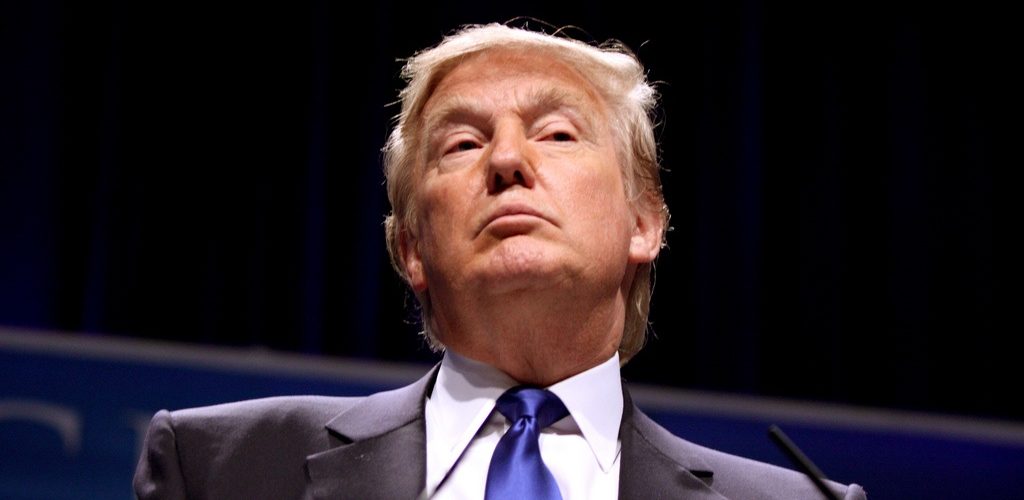“As a hostage negotiator and police officer, I understand negotiations from a tactical standpoint. “
Negotiations are an art form. That is something politicians cannot seem to grasp. Sure, they make deals, agree to things they don’t want, and then celebrate total capitulations of their cause, all in the name of bipartisanship. A successful negotiation for the career politician is anything that can be agreed to, no matter how much they have to hold their nose when they vote.
Enter a new paradigm. Enter the Trump Doctrine. Negotiations with and by President Trump are, as far as most politicians are concerned, something they have never experienced before. This is not limited to the members of the US House and Senate. The style of how President Trump operates has taken the entire world by surprise.
President Trump functions differently from the way things have always been done in the past. The difference is that President Trump is not a politician. He is a businessman, and negotiations are not a matter of just agreeing to get “something” done, as is common in the political arena. The only negotiations President Trump is interested in are those that advance the American agenda—his agenda. The way President Trump approaches negotiations is becoming extremely clear; all one has to do is step back and analyze the outcomes.
As a hostage negotiator and police officer, I understand negotiations from a tactical standpoint. You negotiate from a position of strength. Failure to agree with your proposal carries grave consequences. From a police officer’s perspective, this is something that is a normal course of action every day.
Take a situation where negotiations with someone barricaded in a building are met with an overwhelming show of force. It was the carrot and the stick method. If they came out, you would work with them. If they didn’t, the SWAT team was coming in, and that was not going to end well for them. Most of the time, it worked out.
So let’s examine the Trump method of negotiation.
NATO
President Trump announces NATO is obsolete. He threatens that the US would “moderate” its support, mainly because NATO members are not paying their share of the burden. He sends various envoys to reiterate the stance. NATO countries scream foul, complain, and openly voice their concern with the new position the Trump administration has taken. The press calls Trump’s stance dangerous and talks about his terrible statements.
Result? NATO reexamines this situation. They acknowledge that they cannot survive without the US. They reevaluate their budgetary commitments to NATO and pledge to follow their agreement to pay their fair share. Trump then releases statements that NATO is a valuable resource and that the US will not abandon it. President Trump got exactly what he wanted in the first place—for NATO to pay their fair share.
Immigration and Mexico
All during the campaign, then-candidate Trump made building a wall between Mexico and the US and securing the southern border a major point. He even went as far as to claim that the Mexican government would pay for the wall. After the election, he continues to drive forward on the campaign promise of building a wall. The DHS secretary and newly appointed attorney general echo the administration’s position. Mexico, the press, and the immigrant organizations in this country think the president is unhinged. They ferociously and sometimes violently oppose his position.
The goal is to stem the flow of illegal immigrants streaming into the country from Mexico. President Trump doubles down by stepping up deportation actions, and DHS along with ICE make very public arrests in that area.
Result? The flow of illegal immigrants into the US from Mexico is at a 14-year low. The arrests of illegal immigrants coming across the southern border is down 70%. The goal was to stem the flow of people coming in illegally, and that is precisely what has happened.
Syria
The Tomahawk missile launch in Syria was more about North Korea than Syria. There were several objectives achieved with that strike. First, there was a chemical attack by the Assad regime. The possession and use of chemical weapons by Assad had been a central point in the Obama administration that ended in a weakened US position due to Obama’s inaction.
President Trump makes it abundantly clear that when a threat is made, it can and will be backed up by actions if needed. The strike in Syria sets the groundwork for world leaders to understand that President Trump will take action, unlike his predecessor.
The attack in Syria posed little, if any, risk to the US. No US personnel were sent in; no planes were dispatched. The missiles were fired from hundreds of miles away by two Navy destroyers. Assad had no means to respond, and he didn’t. The world split in support and condemnation for the action. The harshest response was from Assad, Russia, Iran, and China. That was expected, but even those countries’ comments were guarded.
Assad claimed the chemical attack never happened. China voiced their concern over the actions but did not vote against the US is a UN resolution concerning Syria for the first time. Russia condemned US action but then said they would do nothing to stop the US from striking again.
Russia is in a very perilous position, as they are not only helping Assad but were also involved in the removal of chemical weapons from his regime. With the chemical attack by Assad’s forces taking place, Russia is either 1) supporting the use of chemical weapons; 2) incompetent in their efforts to remove the weapons; or 3) will claim Assad concealed the weapons from the Russians to thwart their efforts to remove the chemical weapons.
This last option allows Russia to pull its support from Assad without being seen to acquiesce to Trump’s request that Russia stop supporting Assad. President Trump has handed Putin a way out of his support for Assad. No country wants to be seen supporting chemical weapon attacks such as these. Russia has now stated its support for Assad’s regime is “not unconditional.” Russia appears to be looking for a way out, and President Trump handed them the keys to the door.
North Korea
President Trump is not negotiating with North Korea. What the administration has done is shown North Korean leader Kim Jong-un exactly what he is facing. Standoff strikes in Syria show the capacity to deliver military strikes at a moment’s notice. The recent use of the MOAB in Afghanistan displays the size of destruction that could be exacted without the use of nuclear weapons. North Korea is put on notice.
Negotiations to achieve the desired outcome—one of reduced tensions, abandonment of the North Korean nuclear weapons program, and possibly the eventual removal of Kim Jong-un—are being facilitated through China. In the run-up to the election, candidate Trump was particularly hard on China. During the campaign, Trump threatened various actions against China, both economically and militarily. After his election, President Trump has flexed the US military muscle in the region around the South China Sea and the artificial islands China is building and occupying. This set the stage for talks with China and allowed President Trump to soften his hard-line position and compromise should China work with the US in regards to North Korea.
A naval strike force was dispatched to a position off the North Korean peninsula in a show of strength that placed an added tangible threat behind the president’s words. Kim Jong-un threatened devastation and catastrophic attacks on the US and its allies in the region. Tensions mounted as North Korea signaled they were about to conduct another nuclear test—something the Trump administration had vehemently warned against.
Result?
In the end, North Korea did not conduct the nuclear test but instead tried to show its might by launching yet another intermediate range missile. The launch conducted on Sunday failed—hardly the display of military might Kim Jong-un wanted.
The same day as the meeting with President Trump and Chinese president Xi Jinping, China stopped all sales and purchases of North Korean coal and sent en route deliveries back to North Korea. This effectively killed 80% of North Korea’s trade and access to hard currency. China then suspended all airline flights by Chinese air carriers between the two nations.
In North Korea, the Day of the Sun Parade celebrates the anniversary of the birth of Kim Il Sung, the country’s late founder and grandfather of current ruler Kim Jong-un. North Korea uses this event to put its military might on display in the heart of Pyongyang and show off some of its latest arsenals. This year, no Chinese representatives were in attendance. The absence of China’s support for this event was a blatant display of strained relations between the two nations.
China is pressuring the North Korean government to give up their nuclear weapons program. The pressure China is asserting could lead to the collapse of the Kim Jong-un regime as North Korea becomes even more isolated from the rest of the world (if that is even possible).
In return, the US has stepped up coal trade with China. Trade deals are being negotiated, and President Trump has softened the rhetoric as it pertains to China. China is finding that working with the US is more advantageous than supporting North Korea. China is making a measured choice, and President Trump is tipping the scales in the direction of the US and against North Korea.
President Trump, in his negotiations, starts with a position that is so unbalanced in his direction that there could never be any real expectation of achieving that position. Negotiating from a position that allows him to concede on many demands or claims allows a compromise. By softening the original position, the other party perceives a win of sorts. What results is an agreement that is very close to what the president’s goals were all along.
Some might call his tactics “The Art of The Deal,” and it is working.

















